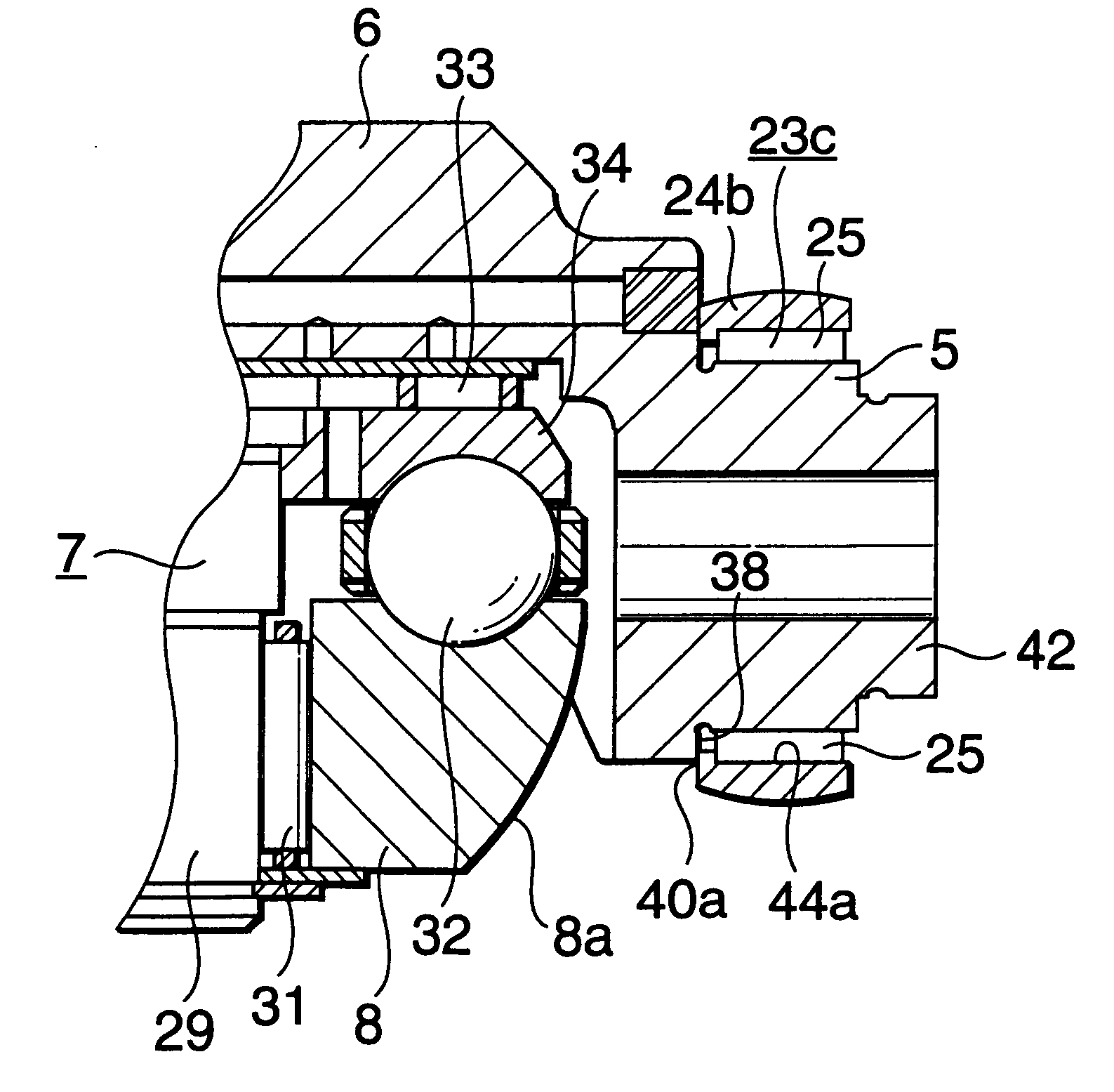Toroidal-type continuously variable transmission
a technology of toroidal type and transmission, which is applied in the direction of sliding contact bearings, mechanical equipment, gears, etc., can solve the problems of increasing the cost of the present transmission, complicated assembly operation, and difficulty in ensuring the durability of the members
- Summary
- Abstract
- Description
- Claims
- Application Information
AI Technical Summary
Benefits of technology
Problems solved by technology
Method used
Image
Examples
Embodiment Construction
Now, FIGS. 1 to 4 respectively show a first embodiment of a toroidal-type continuously variable transmission according to the invention. By the way, the feature of the invention is the structure of radial needle roller bearings 23b, 23b portions respectively used to support the pivot shafts 5, 5, which are respectively formed in the two end portions of trunnions 6, 6, in the inside portions of circular holes 22, 22 formed in support plates 20, 20. The structures and operations of the other remaining portions of the invention are similar to those of various toroidal-type continuously variable transmissions which have been conventionally known or proposed. Therefore, the description thereof is omitted or simplified and thus the following description will be given mainly of the feature of the invention.
Pivot shafts 5, 5 disposed in the respective two end portions of a pair of trunnions 6, 6 are respectively supported on a pair of support plates 20, 20 in such a manner that they can be ...
PUM
 Login to View More
Login to View More Abstract
Description
Claims
Application Information
 Login to View More
Login to View More - R&D
- Intellectual Property
- Life Sciences
- Materials
- Tech Scout
- Unparalleled Data Quality
- Higher Quality Content
- 60% Fewer Hallucinations
Browse by: Latest US Patents, China's latest patents, Technical Efficacy Thesaurus, Application Domain, Technology Topic, Popular Technical Reports.
© 2025 PatSnap. All rights reserved.Legal|Privacy policy|Modern Slavery Act Transparency Statement|Sitemap|About US| Contact US: help@patsnap.com



